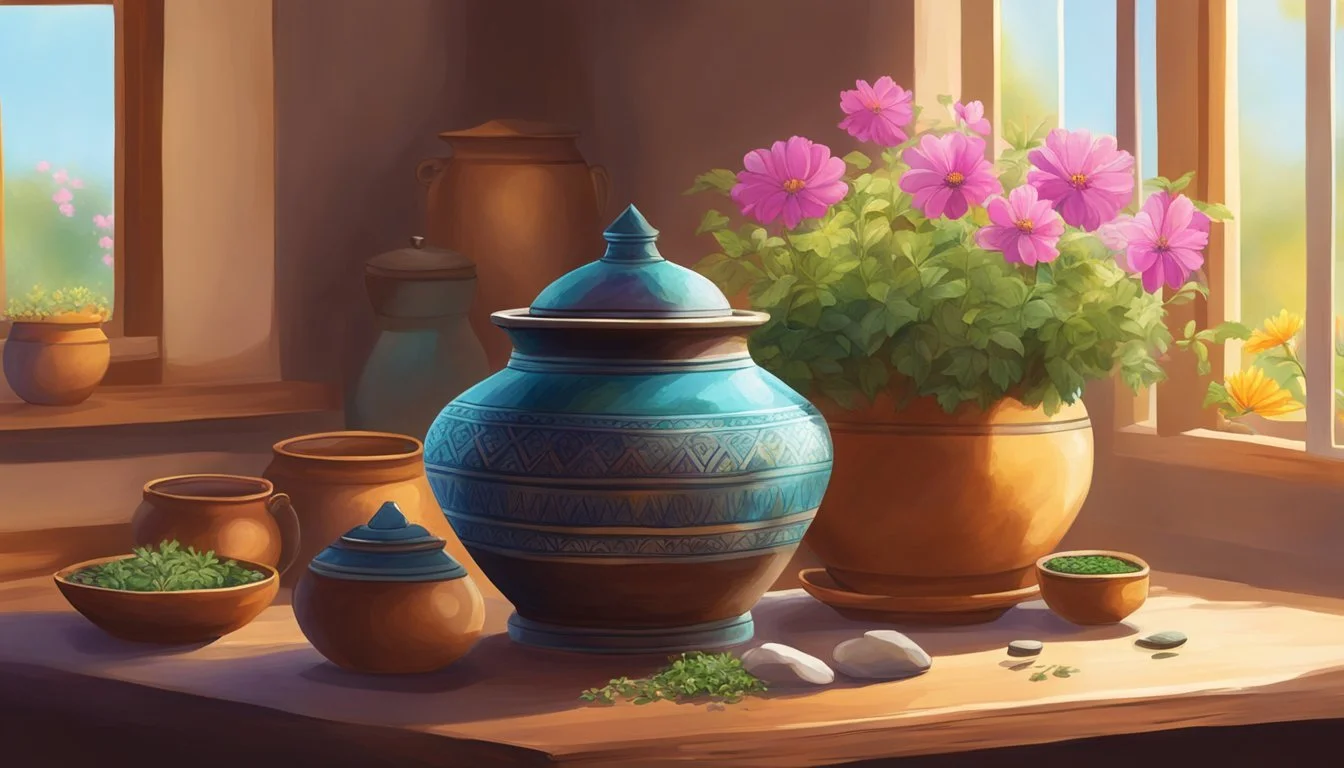6 Forgotten Self-Care Rituals from Around the World
Ancient Practices for Modern Wellness
Self-care practices vary widely across cultures, reflecting diverse traditions and beliefs about wellness. While modern methods often dominate discussions, many ancient rituals remain relevant today. These forgotten techniques offer unique approaches to nurturing the mind, body, and spirit.
Exploring self-care rituals from different parts of the world can expand our understanding of wellness and provide new tools for personal care. From steam baths to meditation practices, these time-honored traditions have stood the test of time. By incorporating elements from various cultures, individuals can create a more holistic and personalized approach to self-care.
1) Jamu Herbal Tonic from Indonesia
Jamu is a traditional Indonesian herbal tonic with a history dating back to the 8th-10th century. This wellness drink plays a significant role in Indonesian culture, offering a natural approach to self-care and health maintenance.
Indonesia's rich biodiversity provides an abundance of medicinal herbs, making it an ideal environment for jamu production. The country is home to 30,000 out of 40,000 known medicinal herbs worldwide, contributing to the diverse range of jamu recipes.
Jamu is more than just a beverage; it represents a holistic wellness tradition. The practice involves daily consumption of various herbal concoctions, each tailored to address specific health concerns or promote overall well-being.
In Indonesian communities, jamu is often prepared and distributed by women known as "jamu gendong." These skilled herbalists carry their tonics in bottles on their backs, serving fresh jamu to locals and preserving this time-honored tradition.
The recent global focus on health has sparked renewed interest in jamu. People worldwide are exploring this Indonesian practice as a way to enhance their wellness routines and connect with natural healing methods.
2) Swedish Forest Bathing (Skogsbad)
Skogsbad, the Swedish version of forest bathing, offers a unique approach to self-care rooted in nature. This practice encourages individuals to immerse themselves in the forest environment, engaging all their senses.
Swedes embrace skogsbad as a way to disconnect from technology and reconnect with the natural world. Participants are encouraged to leave their phones behind and focus on their immediate surroundings.
The practice involves walking slowly through the forest, observing the trees, plants, and wildlife. Participants may touch the bark of trees, listen to bird songs, and inhale the fresh scent of pine needles.
Skogsbad is believed to reduce stress, improve mood, and boost overall well-being. The Swedish approach often incorporates elements of mindfulness, encouraging practitioners to be fully present in the moment.
While similar to Japanese shinrin-yoku, skogsbad reflects Sweden's unique cultural connection to forests. It aligns with the Swedish concept of friluftsliv, which emphasizes the importance of outdoor living and connection with nature.
3) Indian Earthen Pot Water Drinking
The practice of storing and drinking water from earthen pots, known as "matkas" in India, is a time-honored tradition. This ancient method serves both practical and health purposes.
Matkas are made from clay, which naturally cools water through evaporation. This process eliminates the need for refrigeration, making it an eco-friendly option.
The porous nature of clay allows for a slow, constant evaporation that maintains a pleasant temperature. This natural cooling effect is particularly appreciated during hot summer months.
Drinking water from matkas is believed to offer several health benefits. The clay is thought to impart beneficial minerals to the water, potentially enhancing its nutritional value.
Some proponents claim that matka water aids digestion and boosts metabolism. The slightly alkaline nature of clay may contribute to these effects, though scientific evidence is limited.
Matka water is also said to have a distinct, earthy taste that many find refreshing. This unique flavor profile adds to the sensory experience of drinking water.
Using matkas for water storage holds cultural significance in many Indian communities. It represents a connection to traditional practices and heritage.
4) Japanese Zazen Meditation
Zazen is a cornerstone practice in Japanese Zen Buddhism, offering a path to self-discovery and mindfulness. This meditative technique emphasizes "just sitting" in a specific posture with focused attention on the present moment.
Practitioners typically sit on a cushion called a zafu, with legs crossed in lotus or half-lotus position. The spine is kept straight, with the pelvis tilted slightly forward to maintain proper alignment.
During Zazen, attention is often directed to the breath or a specific point in the body. The goal is to observe thoughts without attachment, allowing them to pass like clouds in the sky.
Regular Zazen practice can lead to increased clarity, reduced stress, and improved focus. It cultivates a sense of inner peace and helps practitioners develop a deeper understanding of themselves and their surroundings.
Zazen can be practiced in formal settings like Zen temples or incorporated into daily life. Even short sessions can provide benefits, making it an accessible self-care ritual for those seeking balance in the modern world.
5) Moroccan Hammam Ritual
The Moroccan hammam ritual is a centuries-old tradition deeply ingrained in the country's culture. It combines cleansing, relaxation, and social bonding in a unique bathing experience.
Hammams are public bathhouses with distinct architectural features, including steam rooms and beautifully tiled surfaces. The ritual typically begins in a warm room where bathers relax and prepare for the cleansing process.
A key element of the hammam experience is the use of black soap, made from olive oil and rich in vitamin E. This soap is applied to the skin and left to soften it before exfoliation.
Exfoliation is performed using a rough mitt called a kessa. This process removes dead skin cells, leaving the skin soft and refreshed. Attendants may offer this service, or bathers can do it themselves.
After exfoliation, bathers rinse off and may apply ghassoul clay, a natural mineral clay from the Atlas Mountains. This clay helps purify and nourish the skin.
The ritual concludes with a period of relaxation, often accompanied by mint tea. Many find the hammam experience deeply rejuvenating for both body and mind.
6) Hawaiian Lomi Lomi Massage
Lomi Lomi massage is a traditional Hawaiian healing practice that goes beyond mere physical relaxation. This ancient technique incorporates spiritual elements and aims to restore balance to the body's energy flow.
Practitioners use long, flowing strokes with their hands and forearms, mimicking the rhythm of ocean waves. These movements are believed to promote harmony between mind, body, and spirit.
The practice is deeply rooted in Hawaiian culture and spirituality. It reflects the concept of "mana," the life force that Hawaiians believe flows through all living things.
Lomi Lomi massage focuses on treating the whole person rather than just addressing specific ailments. It encourages recipients to release tension and negative thoughts, promoting overall well-being.
This self-care ritual emphasizes the interconnectedness of all aspects of life. It often includes elements of prayer, breath work, and intention-setting to enhance its therapeutic effects.
Experiencing Lomi Lomi can be a profound way to connect with Hawaiian traditions while nurturing one's physical and emotional health. Its gentle yet powerful approach makes it a unique addition to any self-care routine.
Historical Significance of Global Self-Care Rituals
Self-care rituals have played a crucial role in human societies for millennia. These practices have shaped cultural identities and contributed to individual and community well-being across diverse civilizations.
Ancient Practices and Their Modern Relevance
Ancient self-care rituals continue to influence modern wellness approaches. The Roman baths, precursors to the Turkish hammam, exemplify the enduring legacy of communal cleansing practices. These spaces served not only for hygiene but also as social hubs, promoting physical and mental well-being.
Yoga, originating in ancient India, has gained global popularity as a holistic self-care practice. Its integration of physical postures, breathing techniques, and meditation addresses both body and mind wellness.
The Japanese practice of shinrin-yoku, or forest bathing, draws on ancient wisdom recognizing nature's healing properties. Research supports its effectiveness in reducing stress and boosting immune function, demonstrating the scientific validity of traditional knowledge.
Cultural Heritage and Personal Well-being
Self-care rituals reflect and preserve cultural heritage while promoting individual health. Traditional Chinese Medicine, with its focus on balance and prevention, has influenced global approaches to wellness for centuries.
Indigenous practices like sweat lodges in North America serve dual purposes of physical purification and spiritual connection. These rituals strengthen community bonds and cultural identity.
The Finnish sauna tradition, dating back thousands of years, combines physical cleansing with social interaction. This practice has been recognized by UNESCO as part of Finland's cultural heritage, highlighting the importance of self-care rituals in national identity.
Global self-care practices demonstrate the universal human need for wellness and the diverse ways cultures address this need. They offer valuable insights for developing personalized, culturally sensitive approaches to health and well-being in our modern world.
Psychological Benefits of Self-Care Rituals
Self-care rituals offer significant psychological advantages, enhancing mental well-being and providing effective stress management tools. These practices contribute to improved emotional regulation and cognitive function.
Mental Health Improvements
Self-care rituals promote better mental health by fostering self-awareness and emotional intelligence. Regular meditation practices enhance mindfulness, allowing individuals to process thoughts and feelings more effectively.
Engaging in creative activities like journaling or playing a musical instrument stimulates cognitive function and boosts mood. These expressive outlets provide a healthy way to explore emotions and reduce anxiety.
Consistent sleep routines, a key component of self-care, support mental clarity and emotional stability. Adequate rest improves memory, decision-making abilities, and overall cognitive performance.
Stress Reduction Techniques
Physical exercise, a powerful stress-reduction tool, triggers the release of endorphins - natural mood elevators. Even short daily walks can significantly decrease stress levels and improve overall well-being.
Mindfulness practices, such as deep breathing exercises or yoga, activate the body's relaxation response. This helps lower cortisol levels, reducing the physiological effects of stress on the body and mind.
Creating personal rituals, like a soothing bedtime routine or a morning gratitude practice, provides a sense of control and stability. These predictable patterns can anchor individuals during turbulent times, offering comfort and reducing anxiety.





